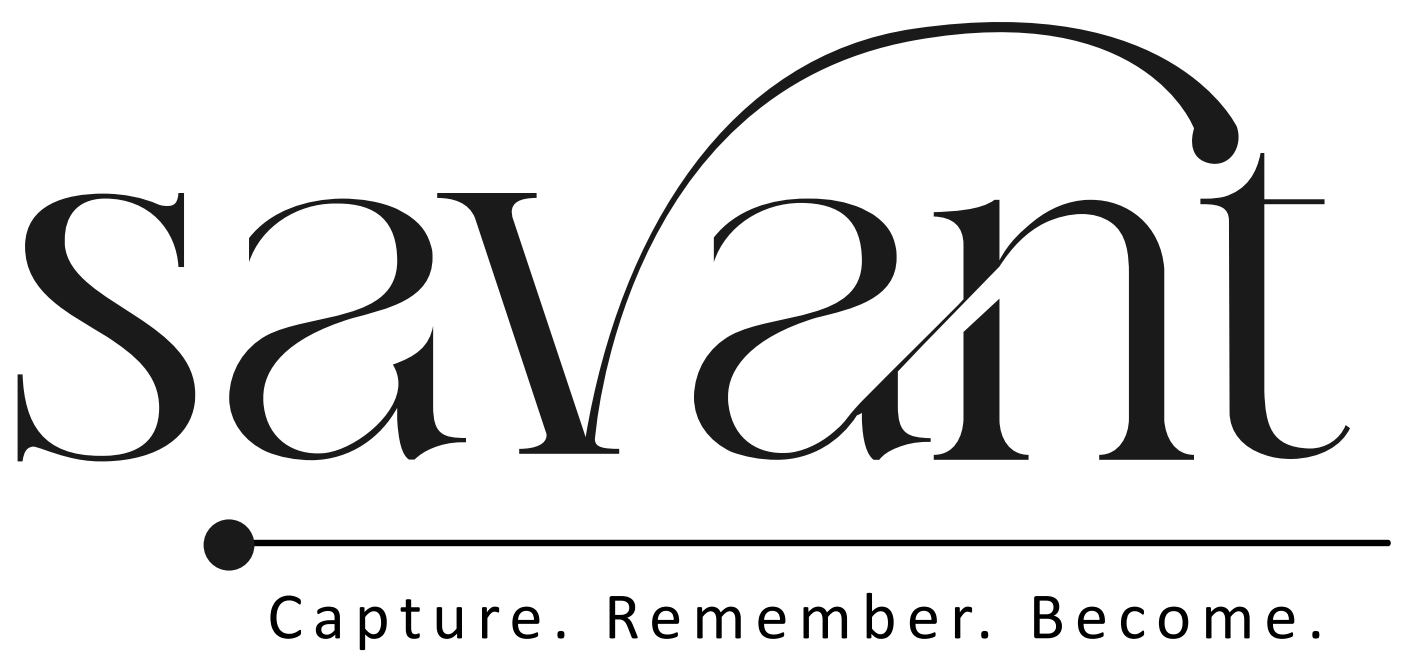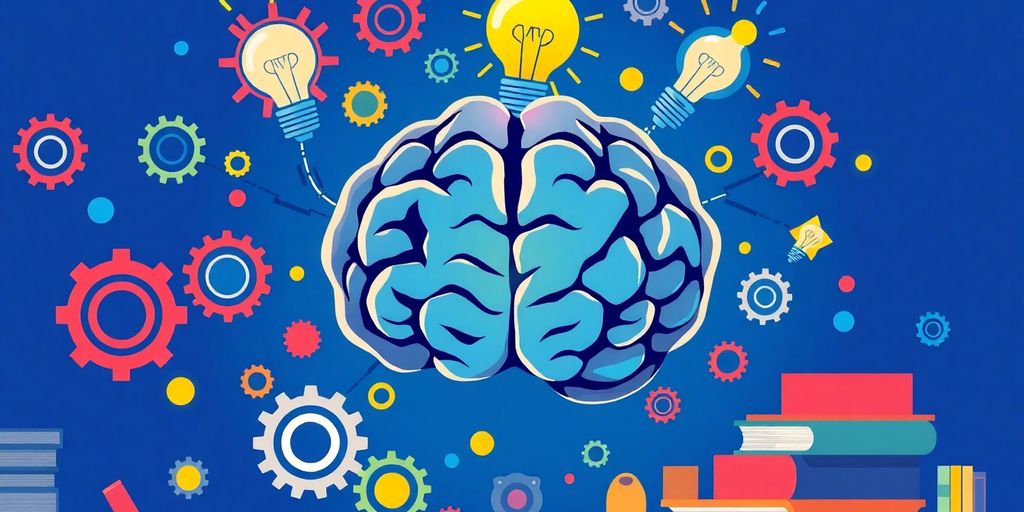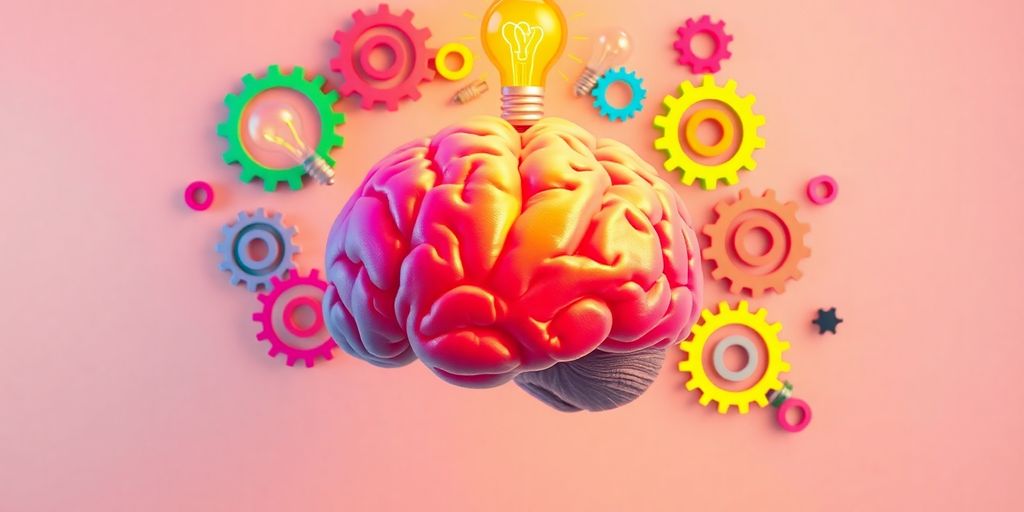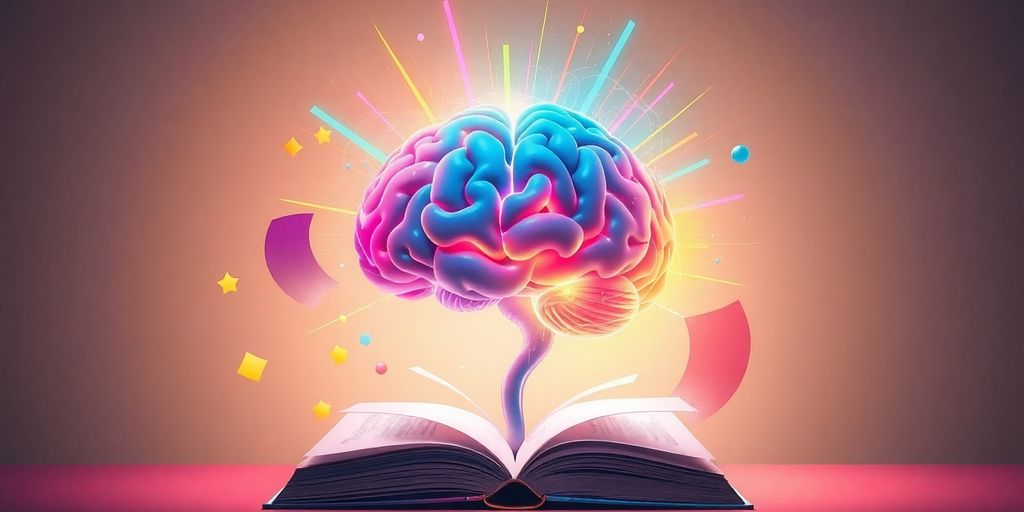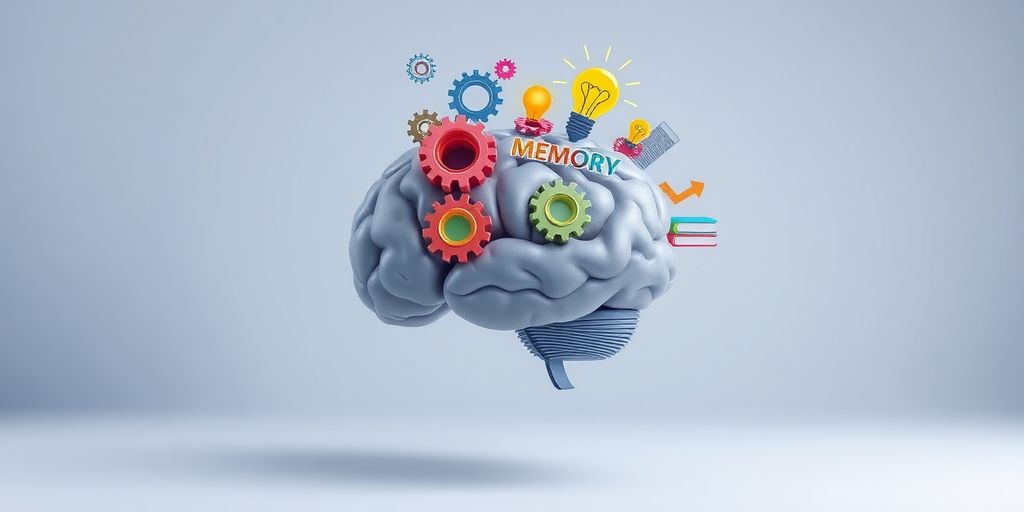Ever feel like your memory is playing tricks on you? Whether it’s studying for a big test, trying to remember a new coworker’s name, or just keeping track of your grocery list, memorizing quickly can be a real game-changer. In this article, we’ll dive into some tried-and-true techniques to help you figure out how to memorize something fast. You’ll discover simple methods that can boost your memory without turning your brain into a tangled mess. Let’s get started!
Key Takeaways
- Visualization can help make information stick by turning it into pictures in your mind.
- Using mnemonic devices like acronyms and rhymes can make remembering things a breeze.
- Chunking breaks down big info into smaller pieces, making it easier to handle.
- Spaced repetition is all about reviewing info over time, not cramming it all at once.
- Active learning, like teaching others, can reinforce what you know and improve recall.
Harnessing the Power of Visualization
Visualization is like giving your brain a movie to watch, and it’s a super cool way to memorize stuff. It’s not just about seeing things in your mind’s eye; it’s about making those images pop with life.
Creating Vivid Mental Images
Ever tried to remember a list of groceries and ended up forgetting half of it? Creating vivid mental images can change that. Imagine a giant loaf of bread dancing in your kitchen or a milk carton doing a jig on the countertop. The crazier the image, the better it sticks.
Engaging Multiple Senses
Visualization isn’t just about sight. It’s about engaging all your senses—smell the fresh bread, hear the milk carton’s jig, feel the cool breeze from the fridge. When you engage multiple senses, the information becomes more tangible and easier to recall.
Building a Story Around Concepts
Stories are memorable. Think about your favorite movie or book. You remember it because it tells a story. So, why not build a story around what you need to memorize? If you’re learning about the solar system, imagine the planets as characters in a wild adventure. This technique makes the information come alive and stick in your memory.
Visualization is not just a trick; it’s a skill. Like any skill, it gets better with practice. Start with simple images and gradually add more details. Before you know it, you’ll be a pro at remembering things visually.
Mastering Mnemonic Devices for Quick Recall

Using Acronyms and Acrostics
Ever tried to remember a list of items, but they just slip away? Acronyms and acrostics are here to help. They turn a string of information into a catchy word or phrase. For example, to recall the order of the planets, you can use "My Very Educated Mother Just Served Us Nachos" for Mercury, Venus, Earth, Mars, Jupiter, Saturn, Uranus, and Neptune. These little tricks make remembering fun and a lot easier.
Crafting Rhymes and Songs
Who doesn’t love a good rhyme or a catchy tune? Turning information into a song or a rhyme can make it stick in your memory like glue. Think about how you learned the alphabet with a song. You can do the same with anything you need to memorize. Get creative and sing your way to better recall.
Developing Personal Associations
Personal connections can be powerful. By linking new information to something you already know, you create a mental bridge. Maybe the word "electron" reminds you of Elvis. Use that! The more personal and unique the association, the better it will stick. This method is all about making the information meaningful to you.
Mnemonic devices are like mental shortcuts. They don’t just make memorizing easier—they make it stick. Whether it’s through a catchy rhyme, a clever acronym, or a personal connection, these techniques help you retain information in a way that’s both effective and enjoyable.
Incorporating mnemonic devices into your study routine can transform the way you memorize. They’re not just tools; they’re your allies in the battle against forgetfulness. So next time you’re faced with a list of facts to learn, try out these techniques and see how much easier it becomes.
Chunking Information for Easier Memorization
Breaking Down Complex Data
When faced with a mountain of information, it’s easy to feel overwhelmed. But here’s a trick: break it down. Chunking is a memory retention technique that helps you recall large amounts of information by organizing it into manageable groups. Imagine trying to remember a 10-digit phone number. Instead of seeing it as one long string of numbers, break it into smaller chunks, like 123-456-7890. This way, your brain can process and store it more efficiently.
Grouping Similar Concepts
Think of your brain as a filing cabinet. When you group similar ideas together, you’re effectively putting them in the same drawer. This makes it easier to pull them out when you need them. For example, if you’re learning about animals, you might group them by habitat or diet. This kind of organization helps your brain make connections between related pieces of information, making it easier to remember.
Utilizing Patterns and Sequences
Our brains love patterns. They make information predictable and easier to remember. When you look for patterns in what you’re trying to learn, you’re giving your brain a shortcut. Let’s say you’re learning a new language. Notice the patterns in verb conjugations or sentence structure. Recognizing these sequences can speed up your learning process and make recalling the information a breeze.
Breaking information into chunks isn’t just a memory trick; it’s a way to make learning feel less like a chore and more like solving a puzzle. By organizing information, you’re not just memorizing—you’re understanding.
The Magic of Spaced Repetition

Spaced repetition is like the secret sauce for remembering stuff long-term. It’s all about timing. You review information at intervals that gradually get longer, which helps cement it in your brain. Let’s dig into how to make it work for you.
Scheduling Regular Review Sessions
First off, you need a plan. Set up a schedule for when you’ll review your material. Start with short gaps, like a day or two, and then stretch them out. This approach keeps the info fresh without feeling overwhelming.
Gradually Increasing Intervals
As you get more comfortable, start increasing the time between reviews. Maybe go from a day to three days, then a week, and so on. This gradual increase is key because it challenges your brain just enough to keep the info locked in.
Enhancing Long-Term Retention
The goal here is to make sure you remember stuff not just for a test next week, but for years down the line. By spacing out your reviews, you’re training your brain to hold onto information for the long haul. It’s like giving your memory a workout!
Spaced repetition isn’t just a study hack; it’s a game-changer. By learning to space out your reviews, you’re setting yourself up for success in anything you want to learn.
And hey, if you’re curious about how spaced repetition enhances learning, it’s all about presenting info right before you forget it. This way, you’re always reinforcing your memory just in time.
Active Learning: The Key to Memory Retention
Teaching Others to Reinforce Knowledge
Ever tried explaining a tricky concept to someone else? It’s like magic for your brain. When you teach, you process the information in a new way, making it stick better. So grab a friend, or even your pet, and start explaining what you’ve learned. You’ll be surprised how much more you remember.
Engaging in Discussions and Summaries
Chatting about what you’re trying to remember can be super helpful. Discussions force you to think about the topic in different ways and consider other perspectives. Try forming a study group or even just talking it over with a buddy. Summarize what you’ve learned in your own words—this not only checks your understanding but also solidifies the memory.
Practicing Recall Without Aids
Put those notes away! Practicing recall without any help is a powerful way to boost memory. This method, known as active recall, challenges your brain to retrieve information, strengthening those neural connections. Start with small chunks of info and gradually increase the complexity as you get better at it.
Active learning isn’t just about absorbing information; it’s about engaging with it in a way that makes it unforgettable.
Combine these active learning strategies with spaced repetition to really lock in what you’ve learned. Regularly revisiting material at intervals helps reinforce concepts and strengthen your memory over time.
Building and Using Memory Palaces
Creating Your First Memory Palace
Alright, let’s dive into the world of memory palaces! Think of a memory palace as a mental map where you can store information. It could be your house, your favorite park, or even a fictional place. Start with a familiar location, something you know like the back of your hand. Walk through this space in your mind, noting distinct spots where you can "store" information. For instance, your front door might hold the first piece of info, while the couch in your living room holds the second.
Associating Information with Locations
The trick here is to link each piece of information you want to remember with a specific spot in your memory palace. So, if you need to memorize a shopping list, you might place "milk" at the entrance and "eggs" on the kitchen counter. The more vivid and unusual the association, the better. Picture a giant milk carton blocking your door or eggs juggling themselves on the counter. The weirder, the more memorable!
Practicing Consistently for Best Results
Consistency is key. Regularly walk through your memory palace and reinforce those associations. The more you practice, the more natural it becomes. It’s like training a muscle; the more you use it, the stronger it gets. And remember, don’t get discouraged if it feels awkward at first. With time, you’ll find your memory palace becoming a powerful tool for fast memorization.
Memory palaces are not just for memory champions; anyone can build and benefit from them. With a bit of practice, you’ll be amazed at how much information you can store and recall effortlessly. If you’re interested in more detailed techniques, check out this book that many have found helpful in mastering memory palaces.
Optimizing Lifestyle for Faster Memorization
Balancing Diet and Sleep
Getting your diet and sleep right is like finding the secret sauce for memory. A balanced diet fuels your brain, and good sleep lets it recharge. Foods rich in omega-3s, like fish and nuts, can boost brain power. But it’s not just about what you eat; it’s also when you eat. Try not to eat heavy meals right before bed, as this can mess with your sleep cycle. Speaking of sleep, aim for 7-9 hours a night. Missing out on sleep can be a real memory killer.
Incorporating Brain Exercises
Think of brain exercises as gym workouts for your mind. Activities like puzzles, chess, or even video games can keep your brain sharp. These exercises promote neuroplasticity, which is a fancy way of saying your brain stays flexible and adaptable. It’s not just about doing the same thing over and over, though. Mix it up! Try learning a new language or instrument, which can really push your brain to grow.
Managing Stress and Relaxation
Stress is like kryptonite for memory. When you’re stressed, your body releases cortisol, which can interfere with memory retention. Finding ways to manage stress is crucial. Whether it’s through meditation, yoga, or just taking a walk in nature, find what helps you chill out. Remember, relaxation isn’t just about doing nothing. It’s about finding balance and allowing your mind some breathing room.
A healthy lifestyle isn’t just good for your body; it’s a game-changer for your memory too. By focusing on diet, exercise, and stress management, you’re setting the stage for a brain that’s ready to memorize anything at lightning speed.
So, if you’re looking to enhance memory for studying, consider these lifestyle changes as your first step. They might just be the boost you need to remember things faster and more efficiently.
Wrapping It Up: Your Memory Adventure Awaits
So there you have it, folks! Memorizing doesn’t have to be a chore. With these handy techniques, like visualization, mnemonic devices, chunking, spaced repetition, and active learning, you’re all set to boost your memory game. It’s like having a superpower, right? Just remember, it’s all about practice. The more you use these tricks, the better you’ll get. So why not start today? Dive into your daily routine with these strategies and watch your memory skills take off. Happy memorizing!
Frequently Asked Questions
Why is visualization helpful for memorizing?
Visualization helps because it turns information into vivid pictures in your mind. This makes it easier to remember and recall later.
What are mnemonic devices and how do they work?
Mnemonic devices are tools like acronyms or rhymes that help you remember information by linking it to something simpler or more familiar.
How does chunking make memorization easier?
Chunking breaks down big pieces of information into smaller, easier-to-handle parts, making it simpler for your brain to process and remember.
What is spaced repetition, and why is it effective?
Spaced repetition involves reviewing information over increasing intervals of time, helping to reinforce memory and keep it fresh.
How can teaching others improve my memory?
Teaching others forces you to understand the material better, which strengthens your own memory and understanding of the topic.
Why is a healthy lifestyle important for memory?
A balanced diet, regular exercise, and good sleep help keep your brain healthy, which improves your ability to memorize and recall information.
